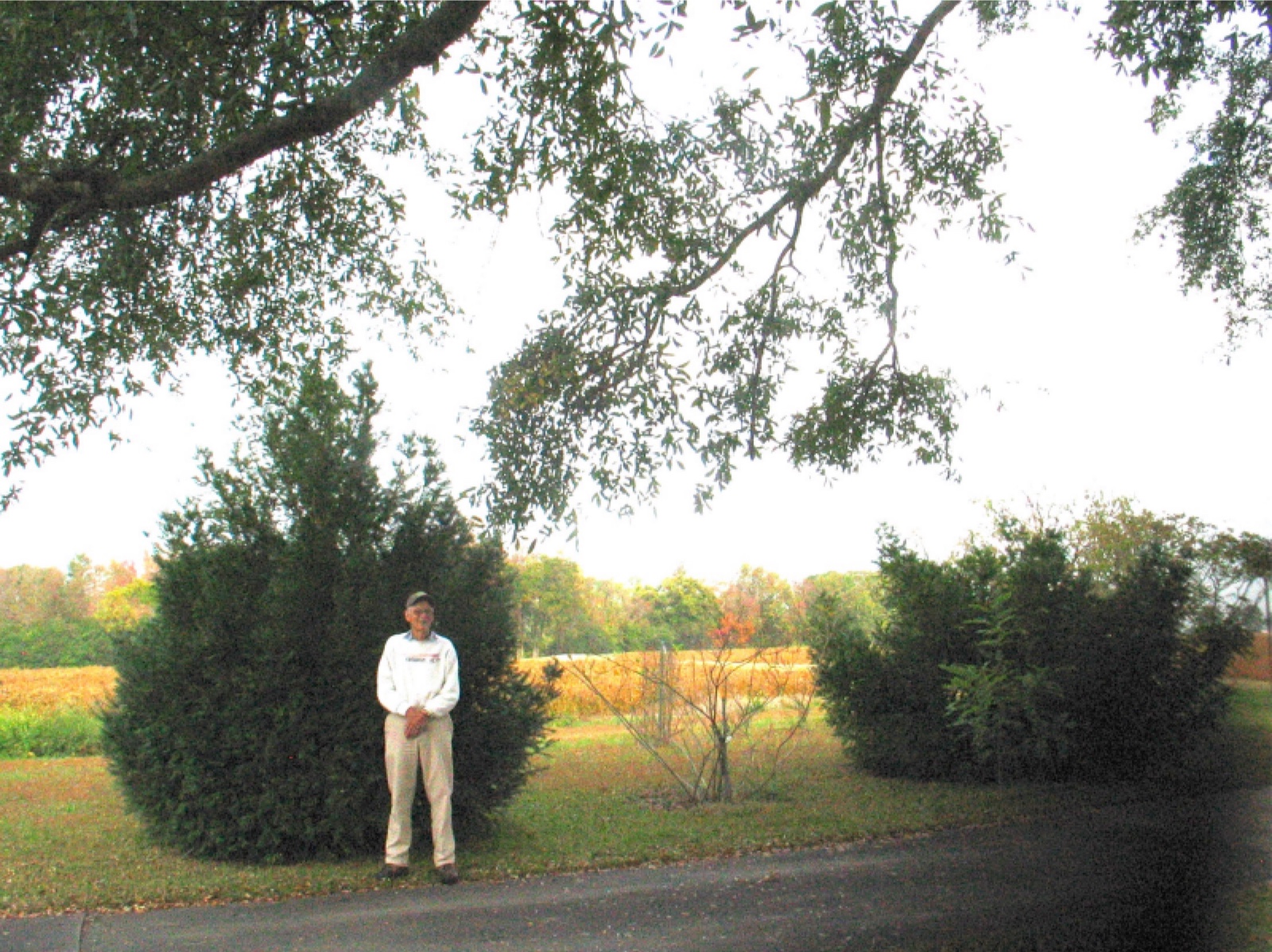
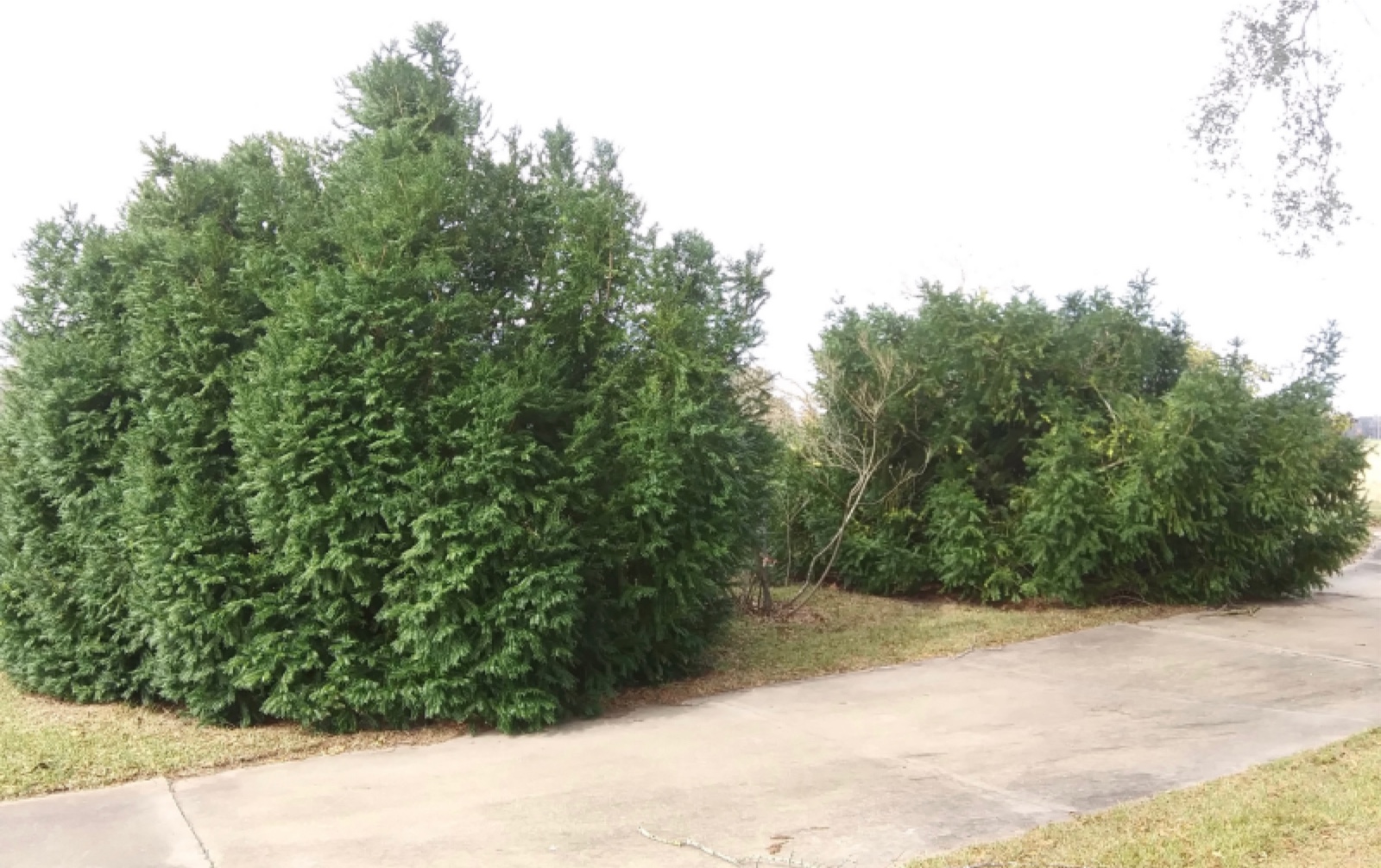
ABOVE LEFT: The year 2013 was the first time that Torreya Guardians collected seed at the home of A.J. Bullard. Here A.J. stands in front of the two trees he planted from seed that he and his cousin collected from the Clinton NC tree in the late 90s.
ABOVE RIGHT: By 2020 the pair of torreyas were encroaching on the driveway. A.J. had died in the spring, so Mrs. Bullard was in charge. Our collecting seeds here was conditioned on our also pruning back the branches encroaching on the driveway.
JOE FACENDOLA writes:
Both trees had grown considerably since the photos taken in 2013 by Connie Barlow and posted on the Torreya Guardians website. The tree on the left appeared to still have a dominant leader, while the tree on the right is assuming more of a large multi-stem shrub shape. No trimming or pruning had been done to date on either tree as far as Mrs. Bullard or her landscaper John (who was there) knew. Mrs. Bullard expressed her concern with the branches of the trees both encroaching her paved driveway as well as the trees themselves blocking her view of who may be approaching up the long gravel road to the house.
Her goal was to have the trees trimmed back to the size they were in 2013, to facilitate mowing around the trees as well as "shape them up." Trimming the trees back to these dimensions would have resulted in many limbs needing to be removed, and leaving many bare stumps of branches. Mrs. Bullard agreed to just having the larger branches next to the driveway removed.
The major trimming efforts were focused on the driveway side of the trees, where they are shaded by a large Darlington Oak. Both the loppers and saw that were used on the torreyas (which came from offsite) were sterilized using a blow torch and also sprayed in a bleach solution earlier that day, to avoid bringing in any possible outside disease. However, the same tools were used on both of the adjacent Mt. Olive trees without being cleaned between each tree. John also used a gas hedge trimmer which was already on the property to "give some shape" to both of the trees. Mrs. Bullard was pleased with the outcome and would like John to lightly shear the trees with the hedge trimmer after the flush of foliage in the spring, to keep the trees from growing back into the driveway. The alternative would be total removal. The photos below show the results.
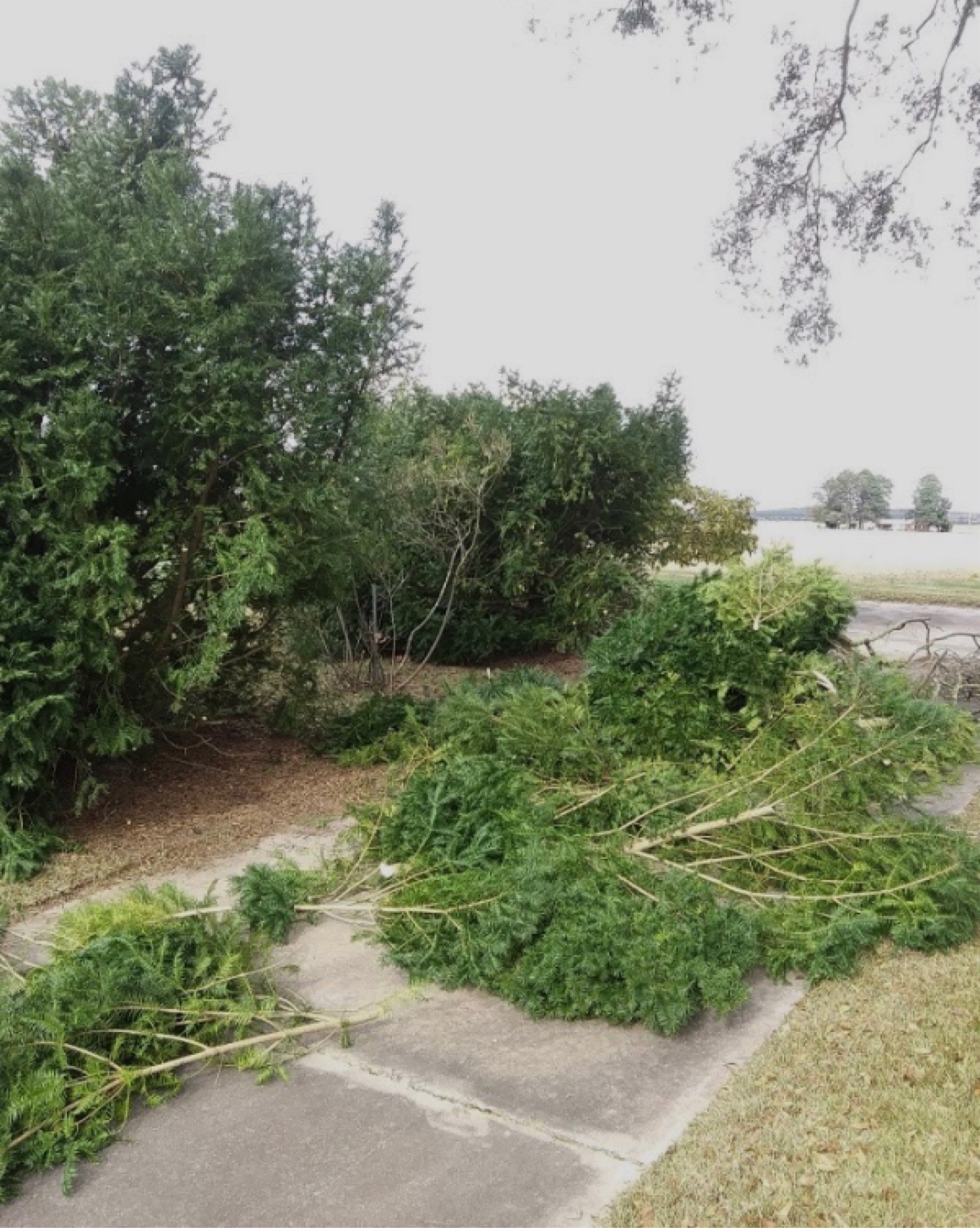

ABOVE PHOTOS: Mrs. Bullard guided Joe in pruning the driveway side of both torreyas (LEFT). Mrs. Bullard also directed a "shape-up" with hedge trimmers of the sunnier side of the shorter, sprawling torreya.
JOE REPORTS:
Both trees were producing seed, however the smaller tree on the right produced much more seed than the one on the left (approximately 3:1). Seed was produced both on the shady (driveway) and exposed sides of both trees. Both trees still had female cones hanging on the branches, however the majority of the seed was already on the ground. The sarcotesta of the female cones collected from the Mt. Olive trees was in a similar state of dryness as those from the Clinton site. The Mt. Olive trees did have some green cones that were not fully mature, as well as dried out cones hanging in the branches. The female cones still hanging in the tree seemed to be mostly in the lower half and interior of each tree. Both trees displayed buds that will develop into both male and female reproductive structures the following year.
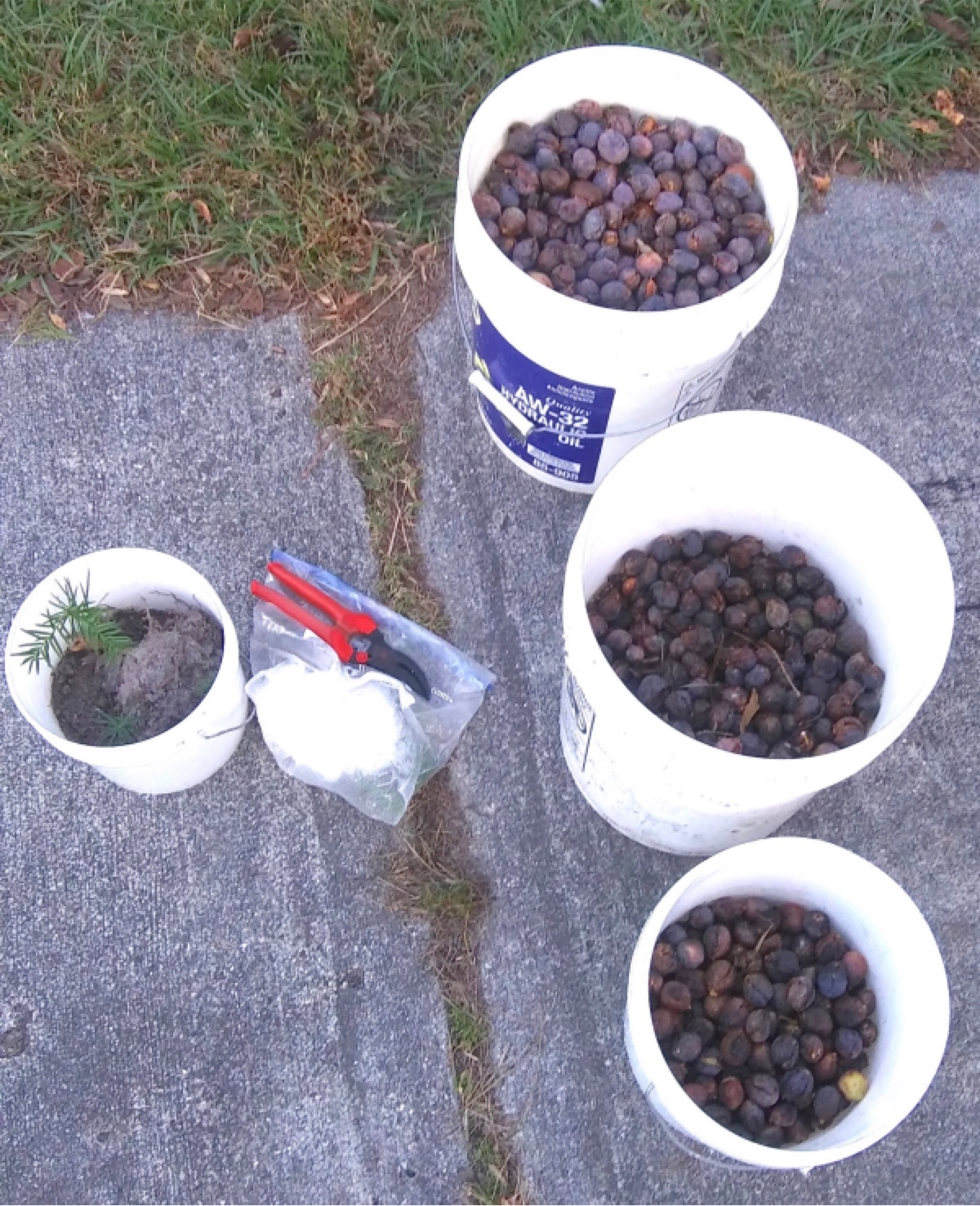
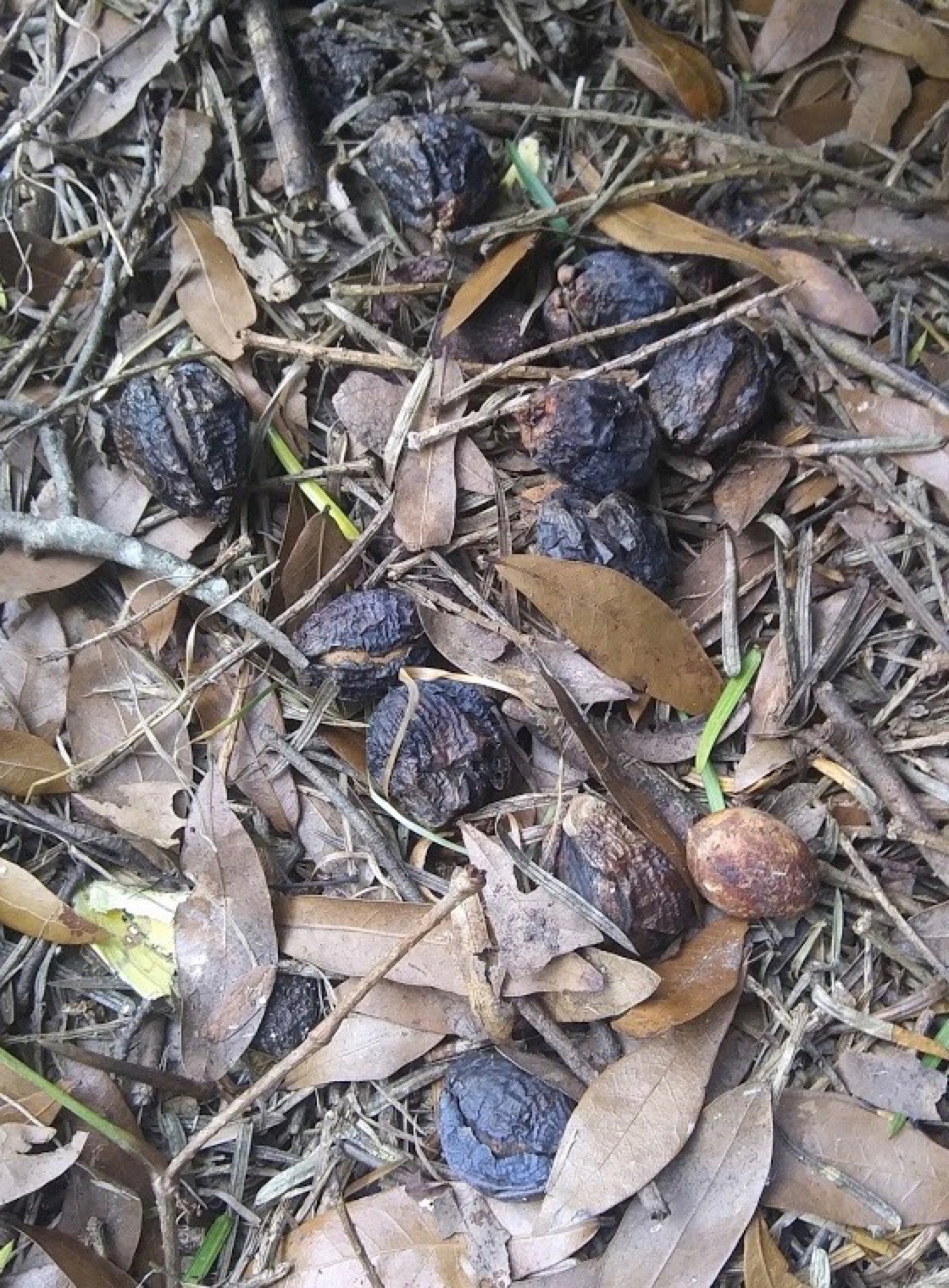
ABOVE LEFT: Seeds from a total of 3 torreya trees were collected in 2020. The most seeds came from the very large Clinton tree (top bucket). Next most abundant came from the shorter, sprawling torreya at Mt. Olive (middle bucket). The taller tree-form torreya at Mt. Olive had the fewest seeds (bottom bucket). The seedling on the left was dug up from near the single mature tree at the Clinton residence.
ABOVE RIGHT: Examples of some of the very dry seed on the ground at Mt. Olive. Seeds which audibly rattled were not collected.
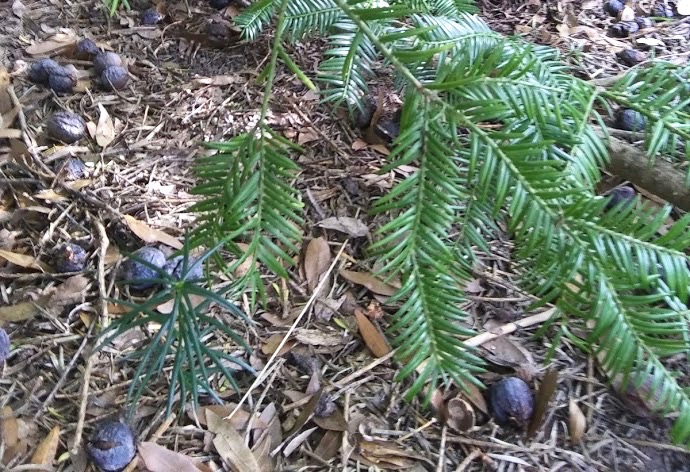 |
|
Three seedlings were found growing directly beneath the Mt. Olive trees, but they were not collected and are still onsite.
One seedling is in the lower left of the adjacent photo.
The seedling has darker and longer leaves whorling around a single vertical stem. This indicates the first above-ground growth flush, as a second growth flush would then produce from 1 to 4 lateral branchlets.
Given the mowed lawn and the paved driveway, there was no opportunity for any seed that might have been carried away and buried by a squirrel to produce a seedling that could continue to grow.
|
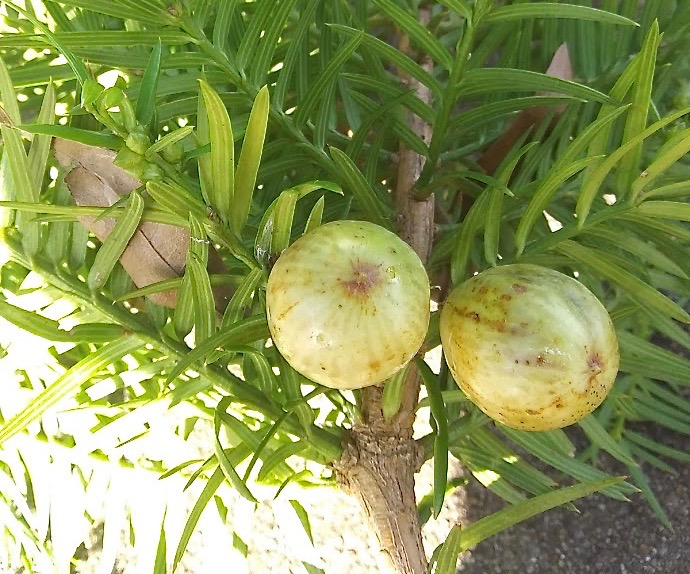
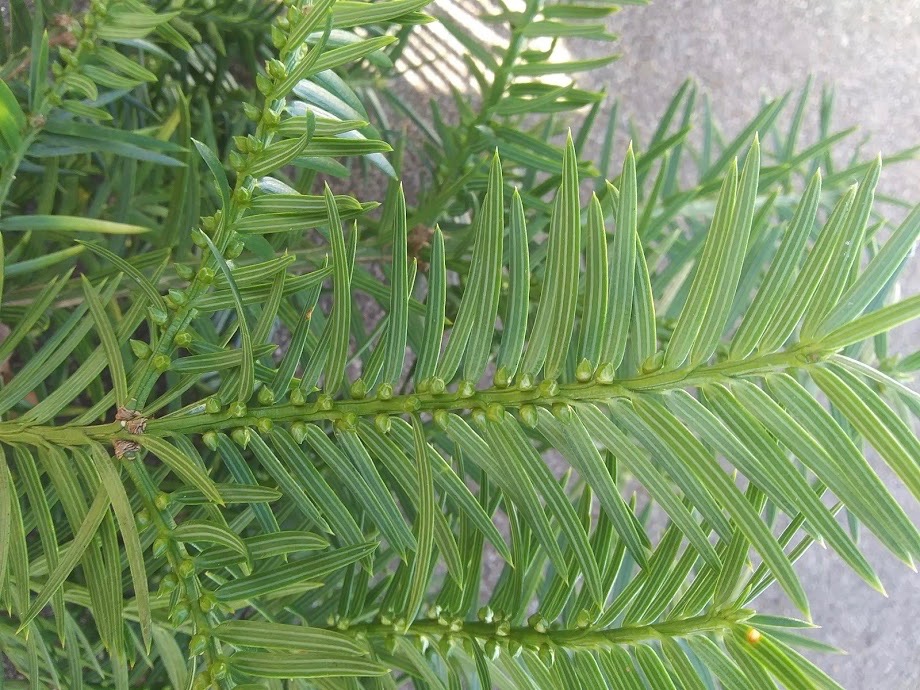
PHOTOS ABOVE: Left is a newly ripening female pair, with a cluster of young female buds visible along the top side of the embedded brown laurel oak leaf. To the right is the characteristic layout of male buds, which reside along a branchlet stem, rather than clustered near the tip. Torreya Guardians have witnessed both male and female branchlets on all 3 of the torreyas at Clinton and Mt. Olive sites. It was A.J. Bullard who first drew our attention to the species' ability to produce both sexes — contrary to what the literature said.
JOE reports:
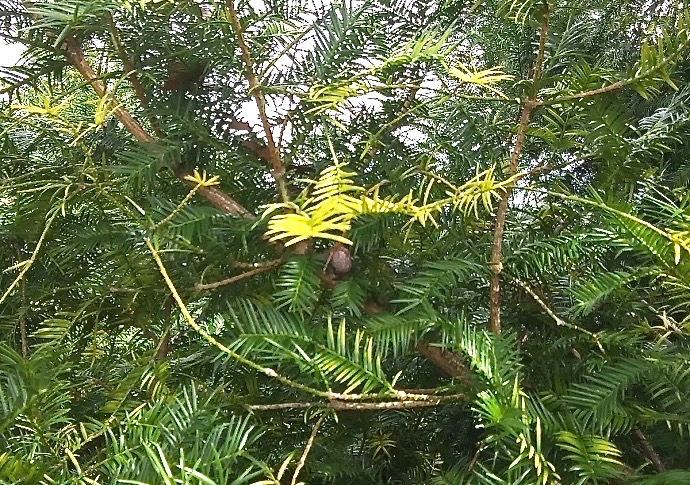 |
|
The tree on the right did have some areas of yellow needles, as well as areas where the needles were yellowed and fallen. This yellowing was primarily on the left side of the tree (on the sunnier exposed side facing the other torreya, and next to a smaller deciduous shrub). The landscaper John did mention that he had earlier in the summer heavily trimmed back the deciduous shrub between the two torreyas in order to ride a mower through. The removal of some of the deciduous shrub may have exposed this section of the torreya to stronger sun, or there is another cause for the yellowing and loss of needles in this section of tree.
|
Knowing how important it was to (a) keep the seeds moist and (b) rapidly get as many as possible directly into the ground in their final destinations, Joe Facendola and Connie Barlow shared the responsibility for mailing seeds to existing and new volunteer planters. During the first three weeks of November, all seeds were sent out in priority mail boxes.
FINAL DESTINATION STATES:
North Carolina, Georgia, Tennessee, Indiana, Virginia, New York, Michigan, Wisconsin, and Ohio.

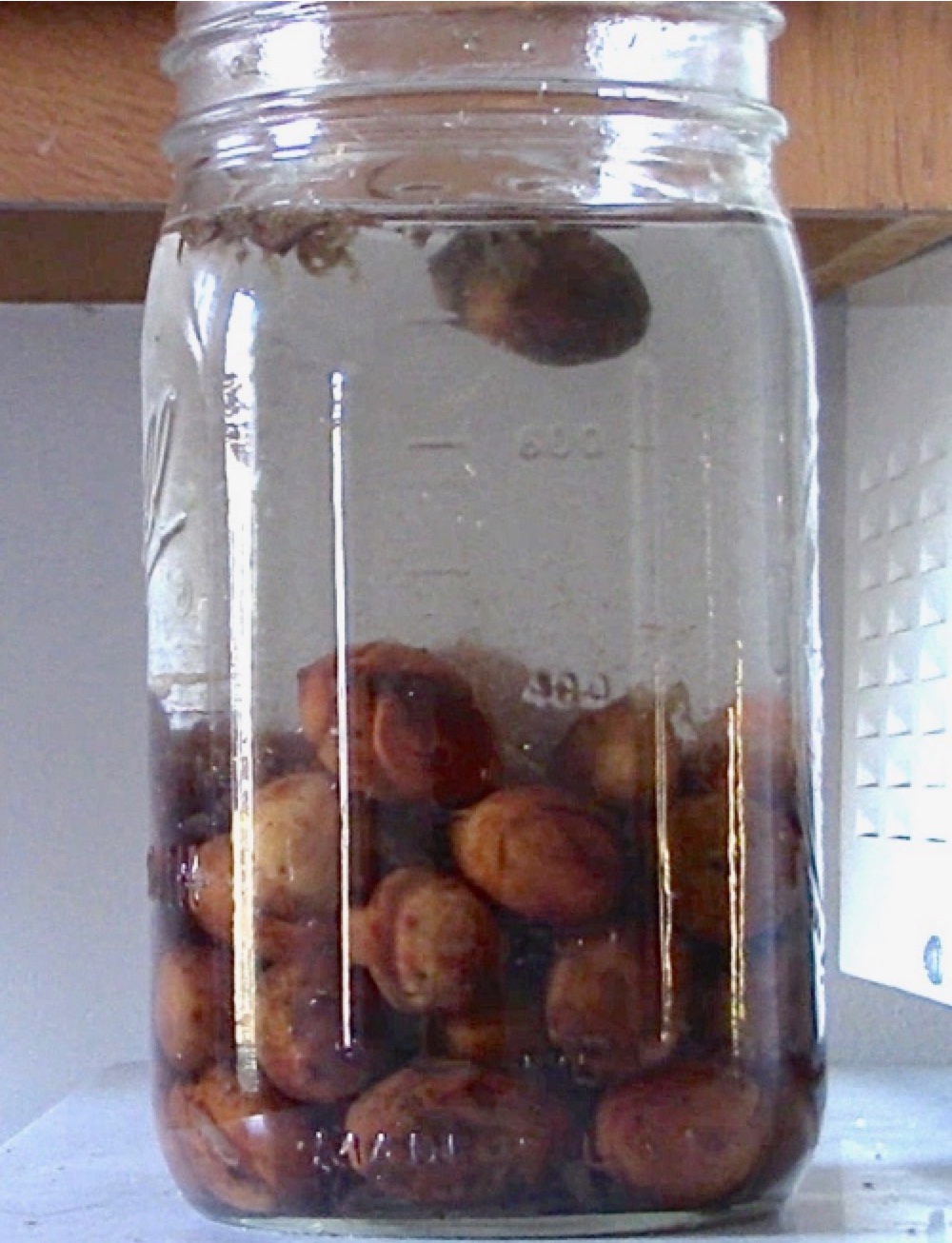
PHOTOS ABOVE: Connie Barlow was in charge of mailing out 1,000 seeds (500 from each of the two sites). Samples of seeds cleaned of their sarcotesta are from Clinton on the left dish and Mt. Olive on the right. Two sets of 50 from each site were immediately tested by Connie in a jar of water. On average, only 1 seed per 50 floated. Recent flotation testing by Clint Bancroft indicates no significant germination differences between floaters and sinkers result. Even so, floaters may have an advantage in being able to disperse farther if they fall into a stream or are carried by flood waters.
• Access the main webpage of the MOUNT OLIVE NC torreyas